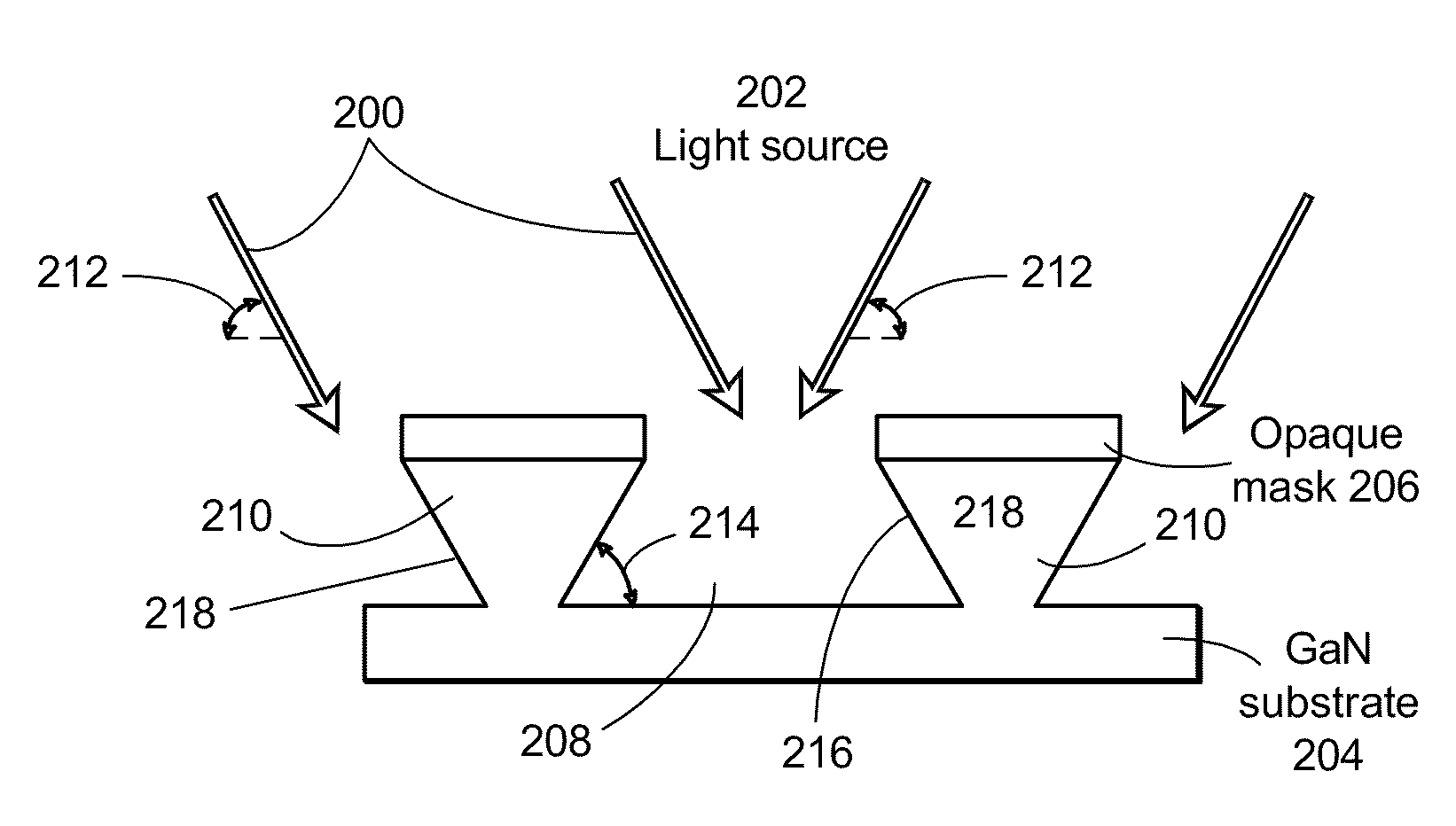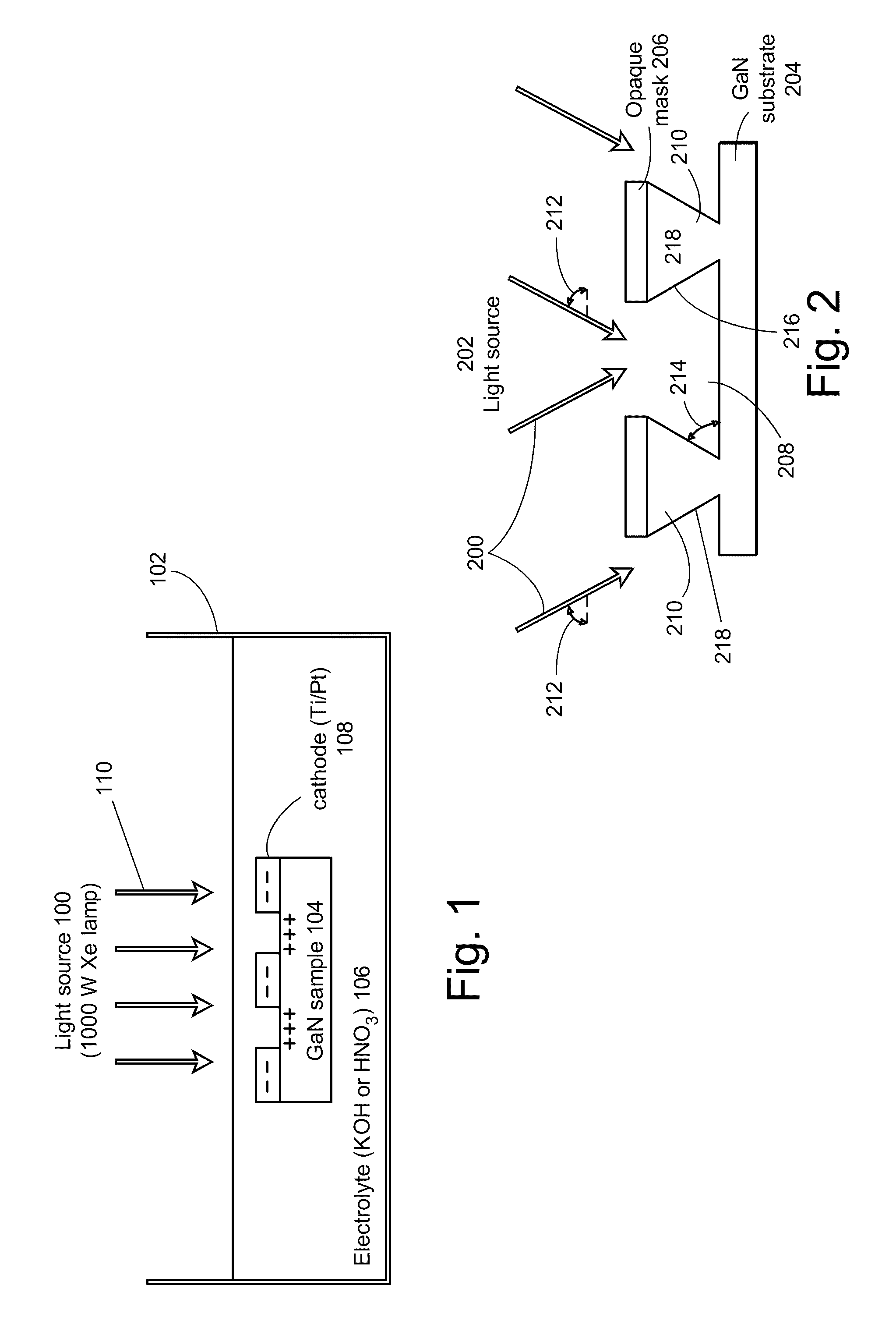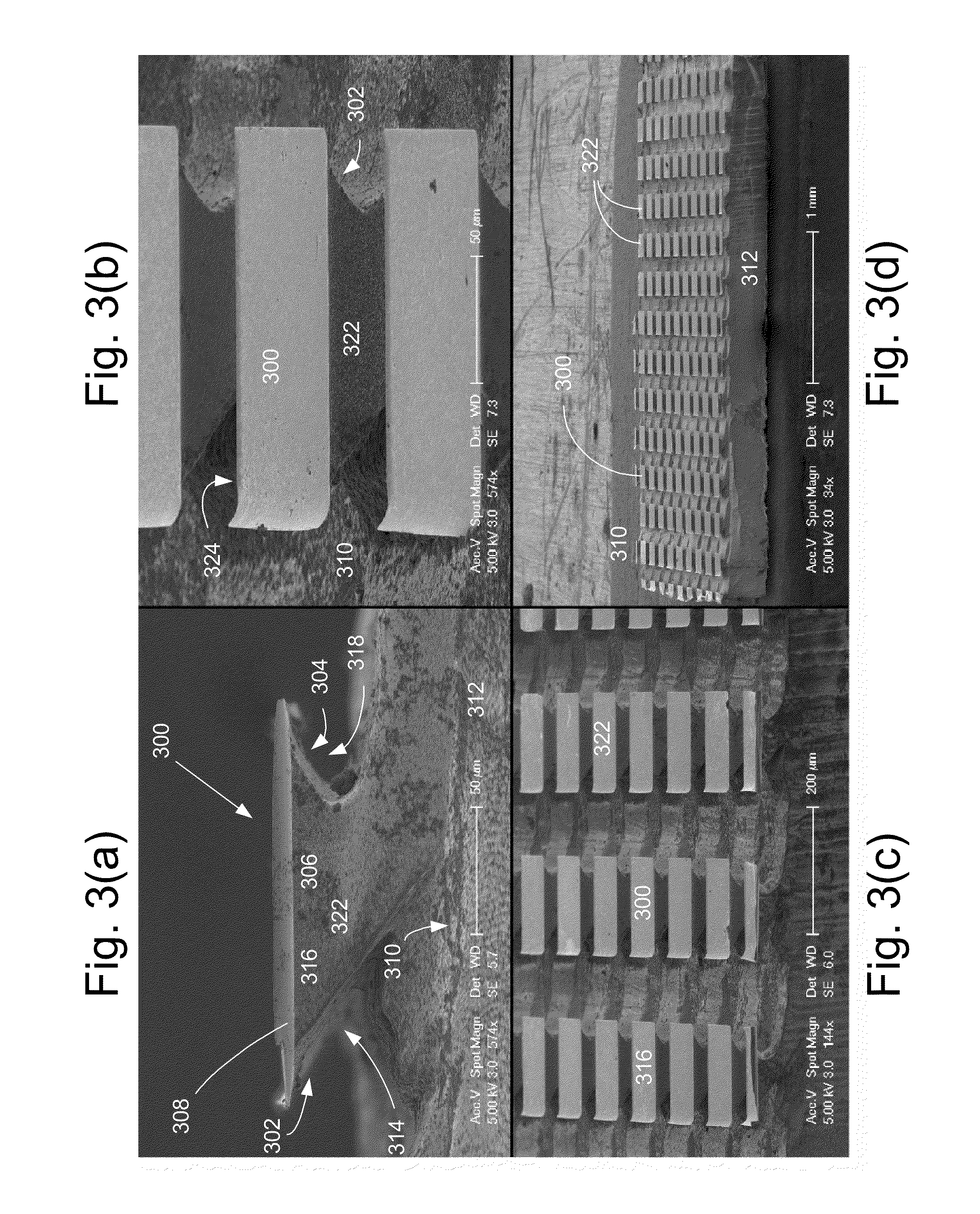Photoelectrochemical etching for chip shaping of light emitting diodes
a technology of light-emitting diodes and photoelectrochemical etching, which is applied in the direction of electrical equipment, semiconductor devices, solid-state devices, etc., can solve the problems of most of the light reflecting back into the material, the loss of material, and the limitation of external quantum efficiency
- Summary
- Abstract
- Description
- Claims
- Application Information
AI Technical Summary
Benefits of technology
Problems solved by technology
Method used
Image
Examples
Embodiment Construction
[0038]In the following description of the preferred embodiment, reference is made to the accompanying drawings which form a part hereof, and in which is shown by way of illustration a specific embodiment in which the invention may be practiced. It is to be understood that other embodiments may be utilized and structural changes may be made without departing from the scope of the present invention.
[0039]Overview
[0040]The present invention describes the use of PEC etching for chip shaping of III-V semiconductor based devices, such as GaN-based and GaAs-based LEDs. Using the technique of the present invention, the material in between LEDs when they are grown on III-V substrates can be directly etched, and by varying the angle of incident light, the angle of the resulting sidewalls can be controlled, resulting in sloped sidewalls, which will scatter guided modes out of the material rather than reflecting them back. Using PEC etching, non-rectilinear chip shapes can be obtained by contro...
PUM
| Property | Measurement | Unit |
|---|---|---|
| red wavelengths | aaaaa | aaaaa |
| light extraction efficiency | aaaaa | aaaaa |
| angle | aaaaa | aaaaa |
Abstract
Description
Claims
Application Information
 Login to View More
Login to View More - R&D
- Intellectual Property
- Life Sciences
- Materials
- Tech Scout
- Unparalleled Data Quality
- Higher Quality Content
- 60% Fewer Hallucinations
Browse by: Latest US Patents, China's latest patents, Technical Efficacy Thesaurus, Application Domain, Technology Topic, Popular Technical Reports.
© 2025 PatSnap. All rights reserved.Legal|Privacy policy|Modern Slavery Act Transparency Statement|Sitemap|About US| Contact US: help@patsnap.com



